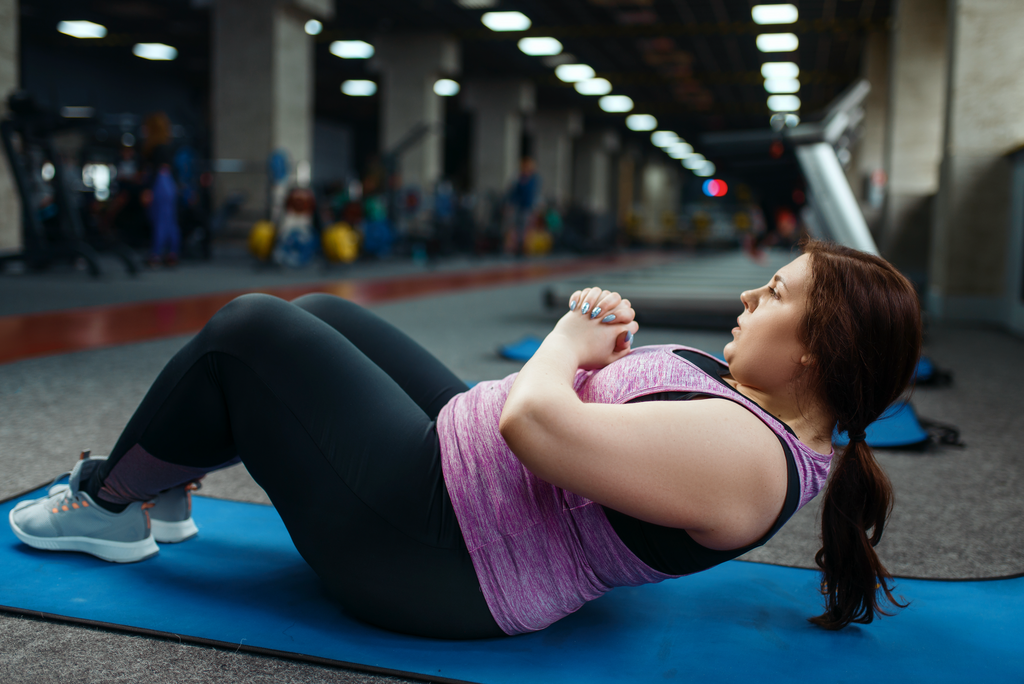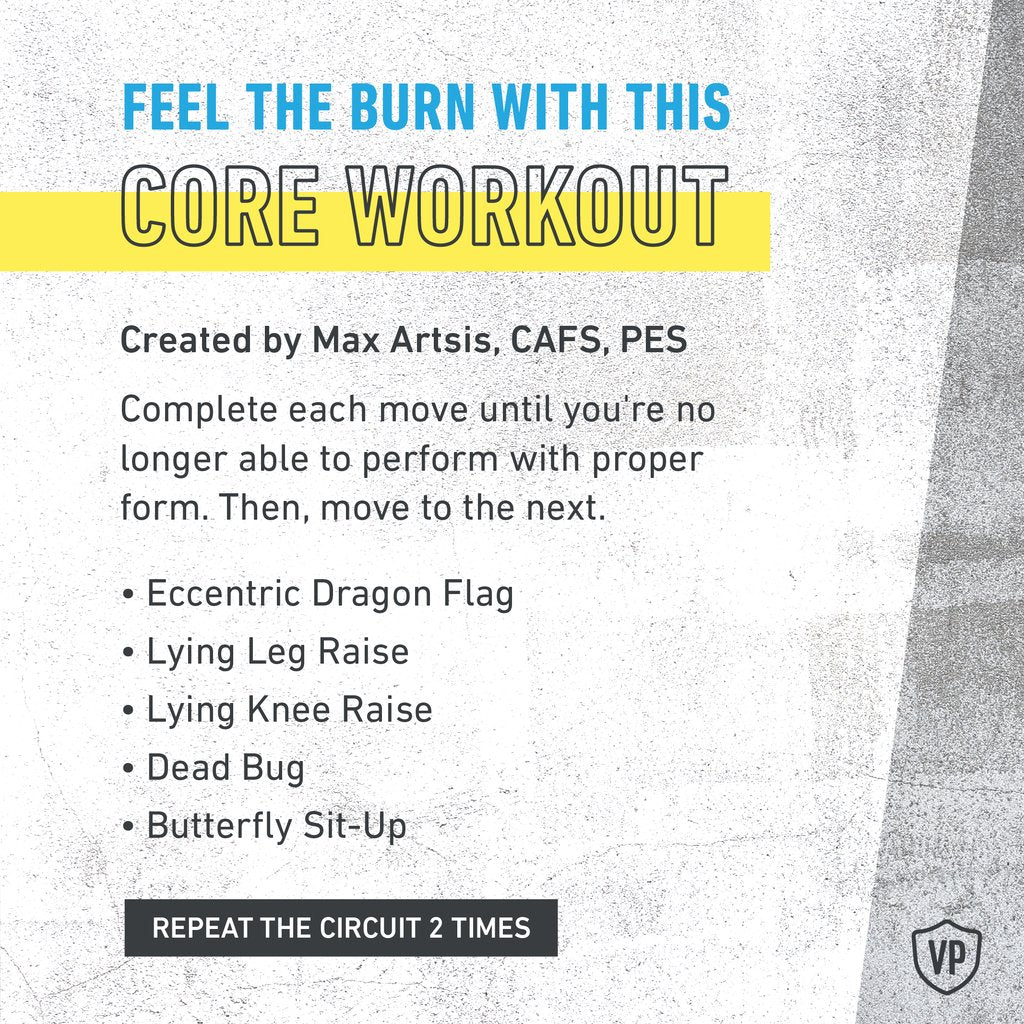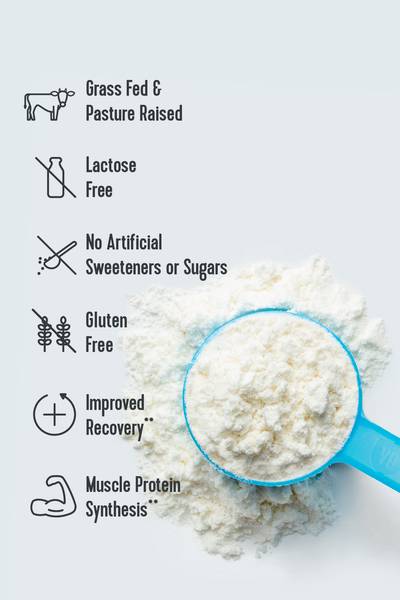It's easy to want your fitness goals to focus on the look of your abs. Ripped fitness professionals sharing fitspo on Instagram can have you feeling some type of way, we get it. But remember — Instagram does NOT equal reality.
Instead, we're here to advocate for doing ab workouts to build core strength. Turns out, a strong core is important for many things.
"Having core strength makes your body basically 'bulletproof' against common back, spine, and hip injuries. You'll stand up straighter, enjoy better posture, look leaner, and be able to move more freely through the activities of daily life without strain," saysAmanda Dale, personal trainer and nutrition and wellness coach.
Read on for more tips for how to add effective ab workouts to your routine!
Vital Note: This article has been made available for informational and educational purposes only. It is not intended to be a substitute for professional medical advice, diagnosis, or treatment. Always seek the advice of your physician or another qualified health provider with any questions you may have regarding a medical condition. Your licensed healthcare professional can best provide you with the diagnosis and treatment of any medical condition and assist you as well in deciding whether a dietary supplement will be a helpful addition to your regimen.

What are the benefits of ab workouts?
Our core actually includes all of the muscles in the abdominal area, including the diaphragm and pelvic floor muscles. The core is what is involved as we step up and down stairs, carry groceries, get in and out of the car, and kneel down to tie our shoes. Our core is used daily, which is why it’s so important to keep it strong.
Core stabilization exercises help to improve posture, balance, reduces the risk of injuries, and is actually the foundation of the human body. Many people think the legs are the foundation and should be the strongest, when in reality it's the core.
Research shows that having a strong core can reduce lower back discomfort, which is more prevalent as people spend more time bent over their phones and computers. Weak and unbalanced core muscles cause the back to lose its correct lumbar curve and healthy posture.
The stronger the core muscles, the less slouching that occurs, which as a result puts less wear and tear on your spine and allows you to breathe deeply. The biggest benefit of core training is that it helps develop functional strength. Functional strength is the type of fitness that is essential for regular activities of daily living.
What is the most effective ab exercise?
Getting a strong core doesn't require doing hundreds of crunches — or even a single one. Instead, you should incorporate more than just the classic sit-up into your routine. That's because most ab exercises target only one muscle group: the rectus abdominis. Not only that, performing these exercises incorrectly can put a lot of strain on the low back. Instead, you should focus on moves that develop core stabilization.
One move that does it all: the plank,Max Artsis, CAFS, PES, Coach Developmental Lead for Tonal, tellsLively.
To do a plank, which is an amazing bodyweight exercise, you'll need only an exercise mat. Start in a plank position, with legs extended behind you and hands planted on the floor, with shoulders under wrists. Hold this position for 30 to 45 seconds at a time. You can also regress the move by holding the position with knees on the ground, or drop to your forearms. There are also ways you can make the move more challenging, such as plank up-downs, mountain climbers, or bird dogs in a high-plank position.
Studies have shown that building core strength helps with balance and stability, improves posture that lessens spine discomfort and allows you to breathe deeply.
There are seven qualities Artsis recommends when you're looking for effective ab exercises. You should focus on creating rotation (mountain climbers), anti-rotation (plank with shoulder taps), dynamic movement (woodchops), stability (single-leg deadlift), dynamic stability (bracing), and functional movement (lifts, chops, throws).
What are the 5 best ab exercises?
There are many core exercises you can do, so there's no need to narrow it down to just five. If you're looking for something new to add to your core routine, try this circuit of 5 core exercises created by Artsis.
Pro Tip: Save this handy workout guide for easy access during your next sweat session!

How to do it:Complete each move until you're no longer able to perform with proper form. Then, move to the next. Repeat the circuit 2 times.
Dragon Flag
Lie faceup on a bench, holding onto the top of the bench with arms bent by your ears, knees bent at 45-degree angle, shins parallel to bench. Engage core and raise back up off the bench as you straighten legs toward ceiling. Hold this position, and with control, lower straight legs down until back is on the bench. In one motion, return to starting position and repeat.
Lying Leg Raise
Lie faceup with hands under lower back for support, legs straight up in the air. Engage your lower abs and slowly lower your legs until they are a few inches off the ground with control, then bring them back up to starting position.
Lying Knee Raise
Lie faceup with arms by sides. Keeping core tight. Bend right knee and bring right leg toward chest, keeping shin parallel to chest. Slowly lower leg to return to starting position then repeat on other side. Continue to alternate.
For an added challenge, perform the move with both legs and head and shoulders slightly elevated.
Dead Bug
Lie faceup with knees and elbows bent, feet flexed. Engage core to crunch up and draw elbows to touch knees. Hold there, then extend your right arm out behind you and lower right leg until it is a few inches off the ground. Return to starting position. Repeat on the other side, left arm and left leg. Continue to alternate.
Butterfly Sit-Up
Lie face-up with knees bent and the soles of the feet touching. Engage core and slowly sit up, touching the ground in front of your feet with fingertips. In a controlled motion, return to starting position and repeat.
Can you work out abs every day?
When it comes to hitting the gym to get stronger,Shannon Flanagan, CPT, recommends treating the abs like any other muscle group. It's important not to overdo it. "Are people doing squats and pull-ups for 30 minutes straight? Nope," she says. "You should not do 30 minutes of crunches. The abs need proper rest just like everything else." Meaning no, you should not work out abs every day.
How can I shape my abs fast?
"No matter how many crunches you do, know these two things: Abs are made in the kitchen and you cannot spot train," Flanagan tellsLively, citing the importance of proper nutrition.
And, know you won't get a six-pack in 30 days, and that's okay. It's more important to work out for your health and not a goal of aesthetics. Focusing on getting a six-pack can actually do more harm to your mental and physical health than good. Instead, focus on your overall wellness goals when you think about your training plan.















